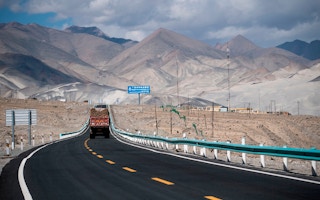In July, China’s Ministry of Commerce (MOFCOM) and Ministry of Ecology and Environment (MEE) jointly released the Green Development Work Guide for Overseas Investment and Cooperation (dubbed the Green Guide) calling for Chinese businesses to adhere to the “green development concept” throughout the entire process of foreign direct investment and cooperation. They also encourage the practice of environmental impact assessments and due diligence in accordance with internationally accepted standards.
The rules are largely targeted at central state-owned enterprises (SOEs), but it was also copied to policy banks such as the China Development Bank, the China Export-Import (Exim) Bank and the China Export & Credit Insurance Corporation, all of whom are key players in China’s overseas investment and trade programme known as the Belt and Road Initiative (BRI).
MOFCOM and MEE are sending Chinese SOEs two strong signals. One is that best environmental practices will help them become more competitive on the global market, and the other one is that weak environmental governance means high investment and even political risks.
The Green Guide is also the first official document in which Chinese SOEs are told to aim high and go beyond the minimum. For a long time, when addressing complaints from locals about environmental damages and weak environmental impact assessments, Chinese SOEs would argue that they follow local relevant regulations and standards.
“
The Kaliwa Dam is the first test for the Green Guide. The score is yet to be marked by the communities and groups in the Philippines, as well as groups in China.
In general, BRI projects are expected to follow the environmental laws and standards of the host countries. But new analysis finds that the minimum standards set by host countries may not be effective in improving corporate environmental performance, particularly when the environmental standards in those counties are considered more lenient than those that are in effect in China.
During in-country consultations, Chinese companies have routinely absolved themselves of the responsibility to ensure that key environmental and social impact assessments (ESIAs) and compensation and resettlement plans are developed and implemented, invoking “respect for local law” to distance themselves from aspects of BRI projects that fall short of international standards and best practices. This guide is a step away from China’s traditional reliance on local standards.
The whole-lifecycle approach encouraged by the guidelines represents a more comprehensive way for companies to approach environmental responsibilities in their overseas projects. The rulebook also clearly emphasises “international green rules and standards”, driving Chinese overseas investments to go beyond “host country rules”.
Green Guide put to the test in Philippines
These new guidelines are likely to be put to the test when the Kaliwa Dam backed by Chinese funding, is constructed.
The project has been mired in controversy for several reasons. It still lacks Free Prior and Informed Consent (FPIC) from the Indigenous People communities and Special Use Agreement in Protected Areas (SAPA) for the use and development of land, resources, or facilities within protected areas.
The Commission on Audit (COA) has also called out the Metropolitan Waterworks and Sewerage System (MWSS) for proceeding with the implementation of the P12.2 billion (US$2.4 billion) Kaliwa Dam project despite failure to comply with the preconditions under the environmental compliance certificate.
Some of these preconditions include the submission of approved reforestation programme, waste management plan, integrated watershed management plan, comprehensive social development programme, ancestral domain and cultural heritage sustainable development plan, and cultural heritage protection plan, as well as the creation of a multipartite monitoring team and inventory and assessment of threatened species that may be affected during clearing operations.
Nevertheless, the Philippines government is determined to proceed with the controversial project despite lack of proof of compliance with environmental prerequisites and failure to submit necessary permits.
The contractor for the Kaliwa Dam, China Energy Engineering Corp, should ask local agencies such as the MWSS, to reach out to the affected indigenous communities for a new round of conversations. The two Chinese ministries also need to give teeth to this Green Guide and ensure the SOEs practice the highest environmental and social standards by respecting local communities’ concerns.
Empowered with the new guidelines from China’s commerce and environmental ministries, communities and environmental groups in the Philippines, and elsewhere, can now hold Chinese companies to a higher standard, at least as high as those in China.
The Kaliwa Dam is the first test for the Green Guide. The score is yet to be marked by the communities and groups in the Philippines, as well as groups in China. The civil society groups in both countries are not only the ones marking the test paper. We are here to support such projects to achieve a win-win outcome with the best environmental and social performances.
Lidy Nacpil is coordinator of Asian Peoples’ Movement on Debt and Development (APMDD). Tom Xiaojun Wang is executive director of People of Asia for Climate Solutions (PACS). APMDD and PACS are working together for transformation of energy systems as part of climate change solutions, and both see the role of China as very important.










